Dermal mast cells determine susceptibility to ultraviolet B-induced systemic suppression of contact hypersensitivity responses in mice
- PMID: 9625764
- PMCID: PMC2212357
- DOI: 10.1084/jem.187.12.2045
Dermal mast cells determine susceptibility to ultraviolet B-induced systemic suppression of contact hypersensitivity responses in mice
Abstract
Different strains of mice have varying susceptibilities to ultraviolet radiation (UV) of wavelength 280-320 nm (UVB) for 50% suppression of systemic contact hypersensitivity (CHS) responses. Prevalence of histamine-staining dermal mast cells in different strains of mice (C57BL/ 6J, DBA/2, BALB/c) correlated directly with their susceptibility to UVB-induced systemic immunosuppression. BALB/c mice carrying Uvs1, a major locus for susceptibility to UV-induced immunosuppression, contained greater numbers of dermal mast cells than BALB/c mice of the same parental origin. Strains of mice that were differentiated on their susceptibility to UVB-induced downregulation of systemic CHS responses were similar in their susceptibility to histamine-induced immunomodulation. Histamine, but not UVB irradiation, decreased systemic CHS responses in mast cell-depleted mice (W f/W f). Reconstitution of the dorsal skin of W f/W f mice with bone marrow-derived mast cell precursors from nonmutant mice rendered the mice susceptible to UVB irradiation for systemic suppression of CHS responses. UVB irradiation did not suppress delayed type hypersensitivity responses to allogeneic spleen cells in W f/W f mice. In contrast, UV irradiation suppressed CHS responses in W f/W f mice when hapten was applied to the irradiated site. This study demonstrates that dermal mast cells are necessary for the induction of systemic suppression of CHS responses by UVB radiation, and suggests that mast cell- derived histamine is one component of this UVB-induced systemic immunosuppression.
Figures
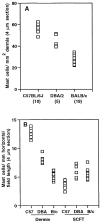

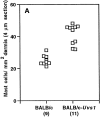



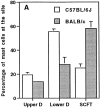

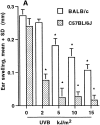

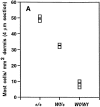




References
-
- Kripke ML. Immunologic mechanisms in UV-radiation carcinogenesis. Adv Cancer Res. 1981;34:69–106. - PubMed
-
- Mottram PL, Mirisklavos A, Clunie GJA, Noonan FP. A single dose of UV radiation suppresses delayed type hypersensitivity responses to alloantigens and prolongs heart allograft survival in mice. Immunol Cell Biol. 1988;66:377–385. - PubMed
-
- Gilmour JW, Vestey JP, Norval M. The effect of UV therapy on immune function in patients with psoriasis. Br J Dermatol. 1993;129:28–38. - PubMed
-
- Yoshikawa T, Streilein JW. Genetic basis of the effects of ultraviolet light B on cutaneous immunity. Evidence that polymorphism at the Tnfα and Lpsloci governs susceptibility. Immunogenetics. 1990;32:398–405. - PubMed
-
- Noonan FP, Hoffman HA. Susceptibility to immunosuppression by ultraviolet B radiation in the mouse. Immunogenetics. 1994;39:29–39. - PubMed
Publication types
MeSH terms
Grants and funding
LinkOut - more resources
Full Text Sources
Other Literature Sources

